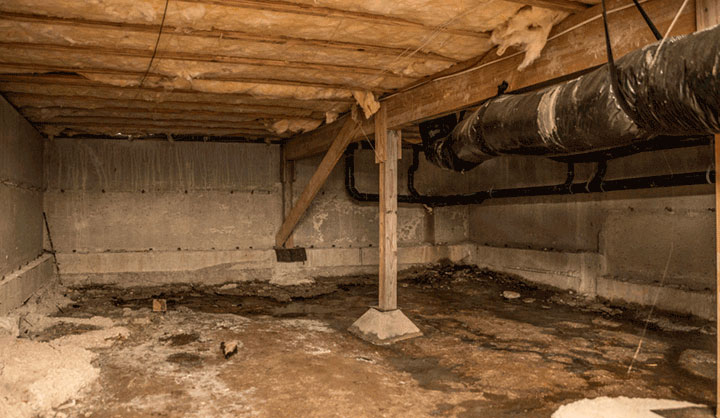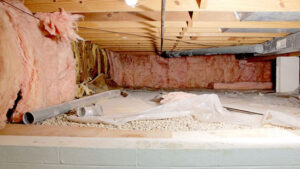Crawlspace Waterproofing: Preserving Your Home’s Integrity Evans City, PA
Crawlspaces are often overlooked areas in homes, but they play a vital role in maintaining structural integrity and indoor air quality. However, crawlspaces are susceptible to water damage, which can lead to a host of issues like mold growth, wood rot, and compromised foundation stability. This article delves into the importance of crawlspace waterproofing and highlights effective methods to safeguard this vulnerable area of your home.
The Significance of Crawlspace Waterproofing
Crawlspace waterproofing is a crucial step in protecting your home from the detrimental effects of moisture intrusion. Water accumulation in the crawlspace can result in mold growth, musty odors, and wood decay, posing health risks to occupants and causing structural damage. By investing in crawlspace waterproofing, you can prevent these issues, improve indoor air quality, and preserve the longevity of your home’s foundation.
Common Waterproofing Techniques

Encapsulation: Crawlspace encapsulation involves sealing the entire crawlspace area, creating a moisture barrier that prevents water vapor from entering. The process typically involves covering the floor and walls with a durable, waterproof material like a heavy-duty plastic liner. Additionally, all gaps, cracks, and openings are sealed to prevent moisture intrusion.
Drainage Systems: Installing a crawlspace drainage system is crucial to redirect water away from the area. A perimeter drain or French drain is commonly used to collect and channel water to a sump pump or gravity drainage system. This prevents water from pooling in the crawlspace and reduces the risk of damage.
Ventilation and Dehumidification: Proper ventilation is essential in controlling moisture levels in the crawlspace. Installing vents and fans helps to circulate air and prevent condensation. Additionally, using a dehumidifier can effectively remove excess moisture from the air, reducing the risk of mold growth and dampness.
Insulation: Insulating the crawlspace is another essential aspect of waterproofing. Insulation helps regulate temperature and prevents condensation. It also acts as a barrier, preventing moisture from seeping into the crawlspace. Closed-cell spray foam insulation is commonly used as it provides a vapor barrier and effectively seals the crawlspace.
Maintenance and Professional Assistance
Regular maintenance is crucial to ensure the effectiveness of crawlspace waterproofing. It is essential to regularly check for signs of water intrusion, inspect and clean drainage systems, and monitor humidity levels. Additionally, addressing any cracks or gaps promptly can prevent future water damage.

While some homeowners may opt for DIY waterproofing, it is often recommended to seek professional assistance. Experienced waterproofing contractors can assess the specific needs of your crawlspace, provide tailored solutions, and ensure proper installation. They have the expertise and equipment to identify underlying issues and implement effective waterproofing techniques to safeguard your crawlspace.
Crawlspace waterproofing is a vital investment in protecting your home’s structural integrity and indoor air quality. By employing techniques such as encapsulation, drainage systems, ventilation, and insulation, you can prevent moisture-related issues and maintain a dry, healthy crawlspace for years to come.
Contact the Professionals at Everdry Waterproofing of Pittsburgh Today! 724-432-9020
